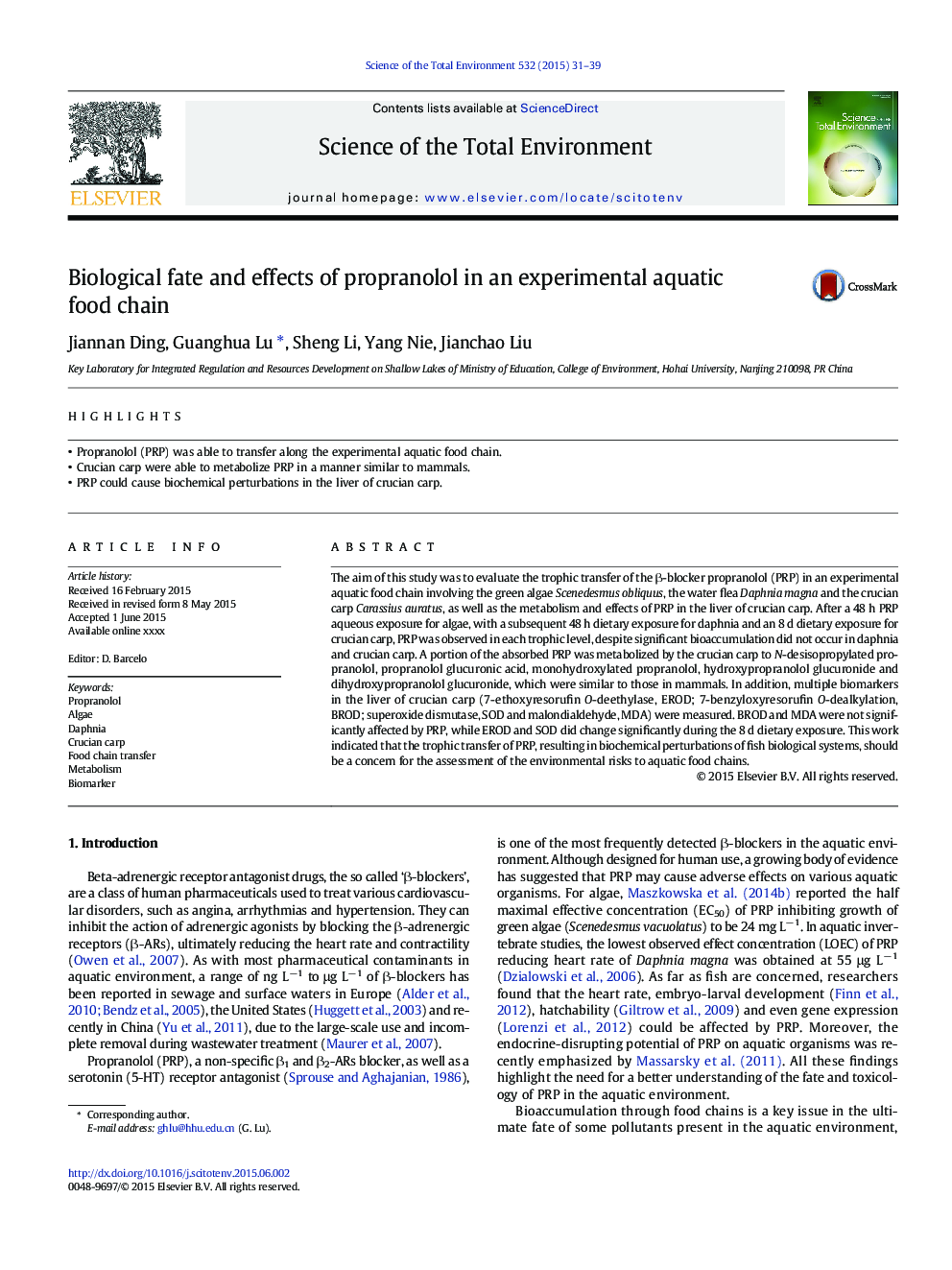| Article ID | Journal | Published Year | Pages | File Type |
|---|---|---|---|---|
| 6325679 | Science of The Total Environment | 2015 | 9 Pages |
Abstract
The aim of this study was to evaluate the trophic transfer of the β-blocker propranolol (PRP) in an experimental aquatic food chain involving the green algae Scenedesmus obliquus, the water flea Daphnia magna and the crucian carp Carassius auratus, as well as the metabolism and effects of PRP in the liver of crucian carp. After a 48 h PRP aqueous exposure for algae, with a subsequent 48 h dietary exposure for daphnia and an 8 d dietary exposure for crucian carp, PRP was observed in each trophic level, despite significant bioaccumulation did not occur in daphnia and crucian carp. A portion of the absorbed PRP was metabolized by the crucian carp to N-desisopropylated propranolol, propranolol glucuronic acid, monohydroxylated propranolol, hydroxypropranolol glucuronide and dihydroxypropranolol glucuronide, which were similar to those in mammals. In addition, multiple biomarkers in the liver of crucian carp (7-ethoxyresorufin O-deethylase, EROD; 7-benzyloxyresorufin O-dealkylation, BROD; superoxide dismutase, SOD and malondialdehyde, MDA) were measured. BROD and MDA were not significantly affected by PRP, while EROD and SOD did change significantly during the 8 d dietary exposure. This work indicated that the trophic transfer of PRP, resulting in biochemical perturbations of fish biological systems, should be a concern for the assessment of the environmental risks to aquatic food chains.
Related Topics
Life Sciences
Environmental Science
Environmental Chemistry
Authors
Jiannan Ding, Guanghua Lu, Sheng Li, Yang Nie, Jianchao Liu,
